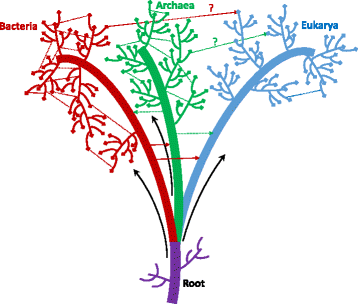Lateral gene transfer in eukaryotes: tip of the iceberg or of the ice cube?
- PMID: 27863503
- PMCID: PMC5116166
- DOI: 10.1186/s12915-016-0330-x
Lateral gene transfer in eukaryotes: tip of the iceberg or of the ice cube?
Abstract
Lateral gene transfer (LGT) is the transmission of genes, sometimes across species barriers, outwith the classic vertical inheritance from parent to offspring. LGT is recognized as an important phenomenon that has shaped the genomes and biology of prokaryotes. Whether LGT in eukaryotes is important and widespread remains controversial. A study in BMC Biology concludes that LGT in eukaryotes is neither continuous nor prevalent and suggests a rule of thumb for judging when apparent LGT may reflect contamination.See research article: http://bmcbiol.biomedcentral.com/articles/10.1186/s12915-016-0315-9 .
Figures

Comment on
-
A natural barrier to lateral gene transfer from prokaryotes to eukaryotes revealed from genomes: the 70 % rule.BMC Biol. 2016 Oct 17;14(1):89. doi: 10.1186/s12915-016-0315-9. BMC Biol. 2016. PMID: 27751184 Free PMC article.
References
-
- Mehrabi R, Bahkali AH, Abd-Elsalam KA, Moslem M, Ben M’barek S, Gohari AM, et al. Horizontal gene and chromosome transfer in plant pathogenic fungi affecting host range. FEMS Microbiol Rev. 2011;35:542–54. - PubMed
Publication types
MeSH terms
Substances
LinkOut - more resources
Full Text Sources
Other Literature Sources

